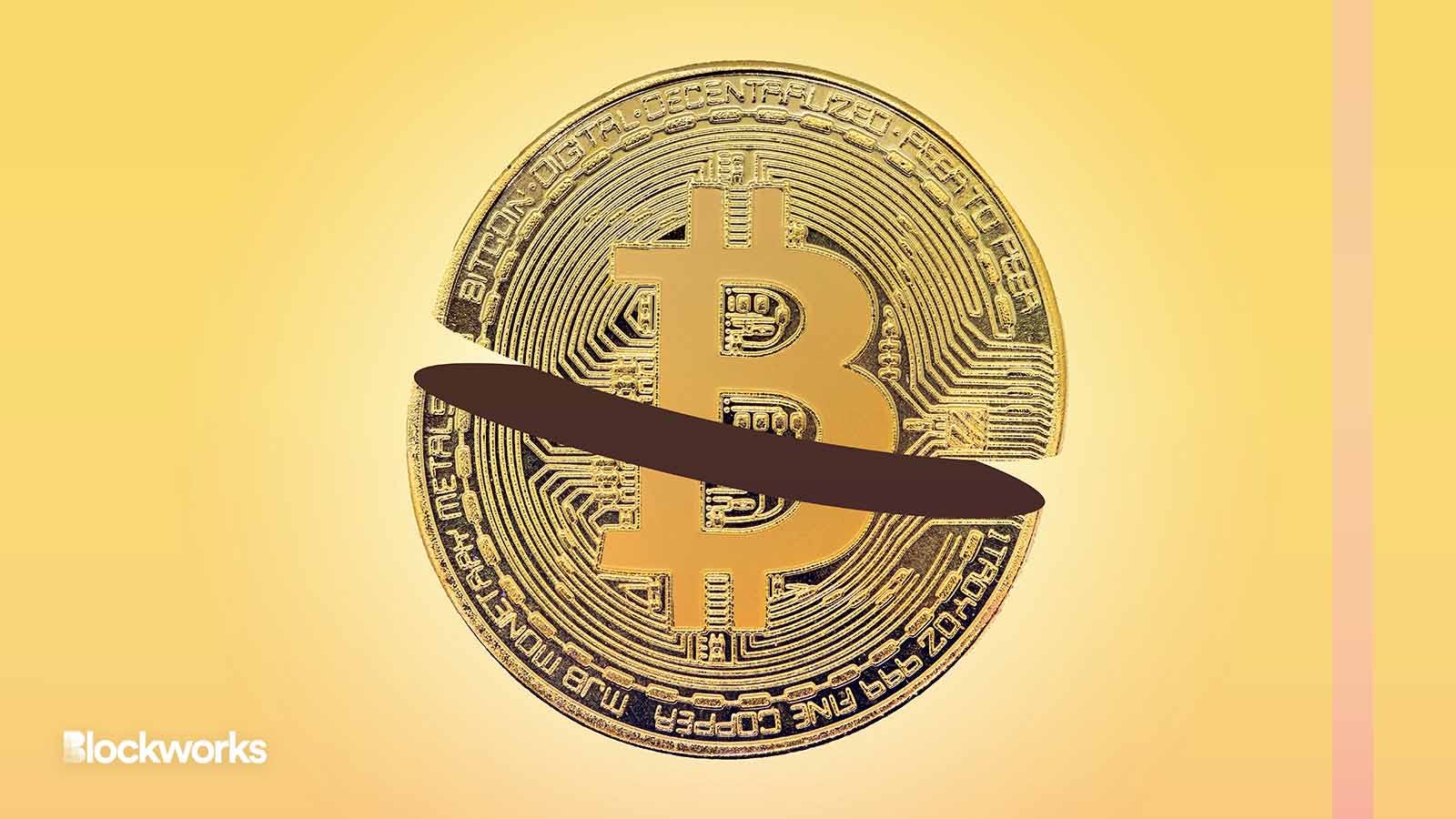At anniversary of 2016 BTC halving, a look to the next one
The bitcoin halving cycle is set to correspond with a crypto and equity bull market that expects to drive higher BTC prices, crypto hedge fund chief investment officer says

travelarium.ph/Shutterstock modified by Blockworks
Seven years ago, Monday, bitcoin mining rewards were cut from 25 bitcoins to 12.5 BTC — a phenomenon that spurred a price rally industry watchers expect to repeat when the next Bitcoin halving hits in 2024.
The implications of the history of halvings repeating in bullish price terms would spill over to bitcoin traders and holders, as well as miners and other network participants. It’s a pattern that has held true across a number of halvings: The 2016 halving was Bitcoin’s second, taking place nearly four years after the first in 2012 and four years before the third in 2020.
A fourth bitcoin halving is slated for April 2024, at which point mining rewards will fall to 3.125 BTC per block.
Bitcoin traded around $650 on July 9, 2016, Berenberg Capital Markets analysts noted in a recent report. And 524 days later, it hit a then-record of $19,712.
Similar rallies occurred after the first and third bitcoin halvings, Berenberg analysts — Mark Palmer, Matthew LaFlash and Hassan Saleem — found.
Bitcoin jumped from $12 on Nov. 28, 2012 to $1,164 just 367 days later.
After mining rewards were slashed from 12.5 BTC to 6.25 BTC on May 11, 2020 — when one bitcoin cost $8,821 — it reached its all-time high 549 days later at $69,036.
“If a rally were to occur after the fourth halving, and if it were as long-lived as the rallies that occurred after the past couple of halvings, then it would continue until around October 2025,” the Berenberg analysts wrote.
But the adoption level of bitcoin now from seven years ago is distinctly different, industry participants said.
Bitcoin’s hash rate sits at roughly 425 million terahash/second (TH/s), according to data compiled by YCharts.com. That figure was closer to 1.5 million terahash/second (TH/s) in July 2016.
“Back in 2016 you could solo mine with just your laptop, whereas now you need high-end, mining-specific machines and join large mining pools to compete,” said Matt Lason, chief investment officer at crypto hedge fund Globe 3 Capital.
Read more: Which bitcoin miners are growing the fastest in 2023?
Lason added he expects bitcoin’s price to follow previous trends by spiking in the upcoming halving’s aftermath, noting that the bitcoin halving cycle is set to correspond with a crypto and equity bull market.
“While past price increases don’t guarantee a future increase, the bitcoin halvings serve as a great reminder for everyone of the power of bitcoin’s monetary policy and the true value of scarcity in an inflationary world,” Lason told Blockworks.
Bitcoin up 82% in 2023
Bitcoin’s price fell below $17,000 after the collapse of crypto exchange FTX. But it stood at about $30,300 Monday afternoon — up roughly 82% so far in 2023.
The Berenberg Capital Markets analysts pointed out, too, bitcoin’s positive price action after BlackRock — a TradFi giant with $9 trillion assets under management — filed an application with the SEC to launch a spot bitcoin ETF last month.
BlackRock CEO Larry Fink said last week during a Fox Business interview he believes the role of crypto is “digitizing gold in many ways.” He also referred to bitcoin as an “international asset.”
Despite an expected rise in bitcoin price, the 2024 halving presents a unique challenge for miners, Lason said. As the rewards of those companies are set to drop, their hardware and electricity costs have “exploded,” he added.
More miners have opted to sell at least a portion of the bitcoin they mine in recent months to cover various operating costs.
Geoffrey Kendrick, head of Standard Chartered’s foreign exchange and digital assets research, said in a research note Monday that he expects miner selling to decrease amid higher bitcoin prices and increased cash profits.
This could push bitcoin’s price to $50,000 by the end of the year and to $100,000 by the end of 2024, he added.
Get the news in your inbox. Explore Blockworks newsletters:
- The Breakdown: Decoding crypto and the markets. Daily.
- 0xResearch: Alpha in your inbox. Think like an analyst.






